Affiliate Disclosure: If you buy something through some of the links on this post, you won’t pay any extra, but we’ll get a small commission. This helps us keep things running. Thanks for your support!
Are you serious about winning Beyblade tournaments?
If you’re serious about winning Beyblade tournaments, then you must already know that preparation is crucial.
But do you know how to structure your research and testing in order to give yourself the best chance of winning?
In a recent article, I discussed How To Prepare For A Competitive Beyblade Burst Tournament, but as always, despite having won over 60 tournaments (and lost many others!) over the past decade, my methods continue to evolve with my experience.
What You’ll Learn in This Report
In this article I discuss some key pieces of my process preparing for our most recent Beyblade tournament in Toronto held on August 21, 2021: Bey Fray Qt.
I will be discussing how my process has evolved since I wrote that article and played in this tournament as well as outlining a basic three step structure that you can follow to comprehensively prepare for any Beyblade tournament you plan to compete in.
This article serves as the first in a three part series covering Bey Fray Qt and is most philosophical in nature. The second and third parts will cover the tournament itself in detail from the experimental rules that were used, to the first stage, and final stage of the event.
Tournament Details
- Date: August 21, 2021
- Location: High Park – Toronto, ON, Canada
- Format: WBO Burst Format (Rulebook)
- WBO Event Page
- Challonge Bracket – First Stage | Final Stage
Heads up: If you buy something through some of the links on this post, you won’t pay any extra, but I’ll get a small commission. This helps me keep things running. Thanks for your support!
Bey Fray Qt Tournament Article Series
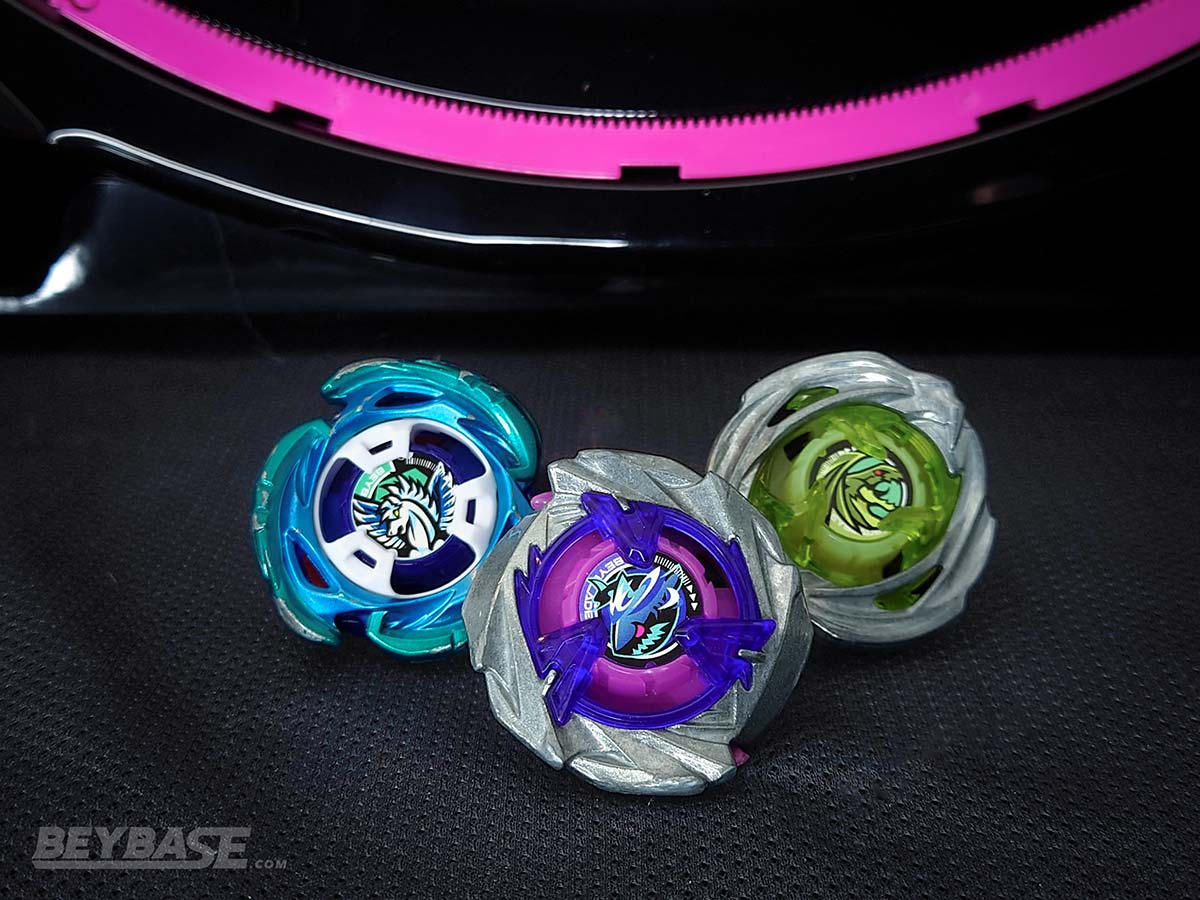
Become an expert with this player’s guide, featuring the best combos and strategies for the stadium.
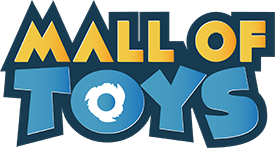
Sponsored: Order the newest Beyblades at malloftoys.com!
Heads up: If you buy something through Mall of Toys, you won’t pay any extra, but I’ll get a small commission. This helps me keep things running. Thanks for your support!
For me, preparing for a Beyblade tournament has become a three step process:
1. How to Research & Gather Meaningful Beyblade Tournament Data
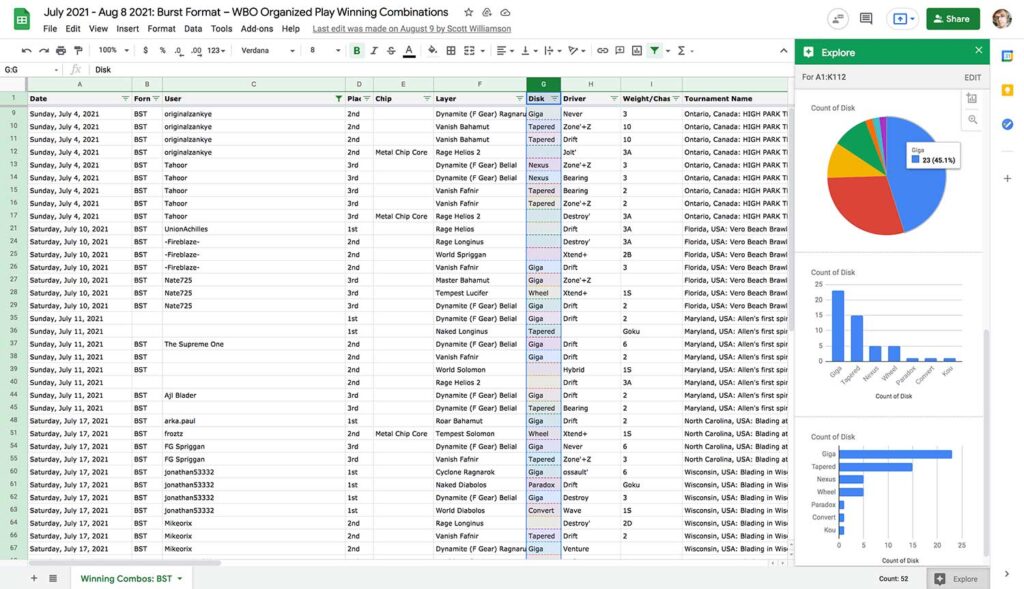
Compiling WBO Winning Combos Data
Similar to the previous Burst Format event I played in (HIGH PARK THROWDOWN 12), I prepared a spreadsheet outlining all of the winning combos in WBO tournaments between July 2021 and the start of August:
WBO Winning Combos July 2021 – Aug 8 2021 BST
This data is required to be submitted by Organizers after every WBO tournament.
How I used the data
I am no mathematician or statistician, so the way in which I used this data was likely not done in the most effective, accurate way.
But I do know the data represents the sentiment running through the top players in the community at any given time, so it’s important to extract whatever value from it that you can as a starting point for your preparation.
The few areas I focused on were:
- Breaking down the total usage numbers for each of the major part categories like Blade, Driver, Disk, and so forth.
- Review how often certain combinations of parts were used together (for example, the Vanish Blade was used 66.6% of the time with Zone’+Z).
- Review the split between left- vs. right-spin combinations.
- Review how common certain parts–like Drift–were among first place finisher first stage combos.
- Review how uncommon attack type combos were.
What the data revealed
This data gave me the ability to:
- Establish a baseline with which to judge how common certain parts in each category were among top performing players.
- Identify specific opportunities that might give me an edge in battle where I felt that a certain part was being overused or underused.
- Reinforce my personal feelings about certain parts.
It’s important to recognize that in doing this, what you garner will not translate 100% to whatever tournament environment you will be entering because this set of data reflects the preferences of a mixture of many different local metagames across North America.
New releases will also often dramatically shift what parts are successful. In the case of Bey Fray Qt, B-187 Starter Savior Valkyrie.Sh-7 and B-188 Astral Spriggan Customize Set had been released since our previous event.
Parts from both of those releases had a huge effect on this tournament, so taking this into consideration is also important.
As such, using this type of data can’t be used to precisely predict what will happen at the event you will attend next … but what it does is give you direction and reinforcement that can influence how you choose to advance to the next step of the preparation process: testing.
A lot of players spend time looking at the winning combinations on an event-to-event basis, but I’m not sure how many take the time to start trying to formalize a process for analyzing them on a broader community-wide level like this.
Doing so doesn’t give you all of the answers, but it enables you to more accurately begin to formulate and ask deeper questions about why things are the way they are, and how you can be different in meaningful, legitimate, and appropriate ways.
Reviewing Past Battle Records
I’ve recorded what combinations were used by all of my opponents (and myself) over the past five years in each of my matches. After each tournament I plug them into a spreadsheet.
Over time, this allows you to begin building a ‘profile’ of sorts for specific opponents in your community once you’ve played them several times.
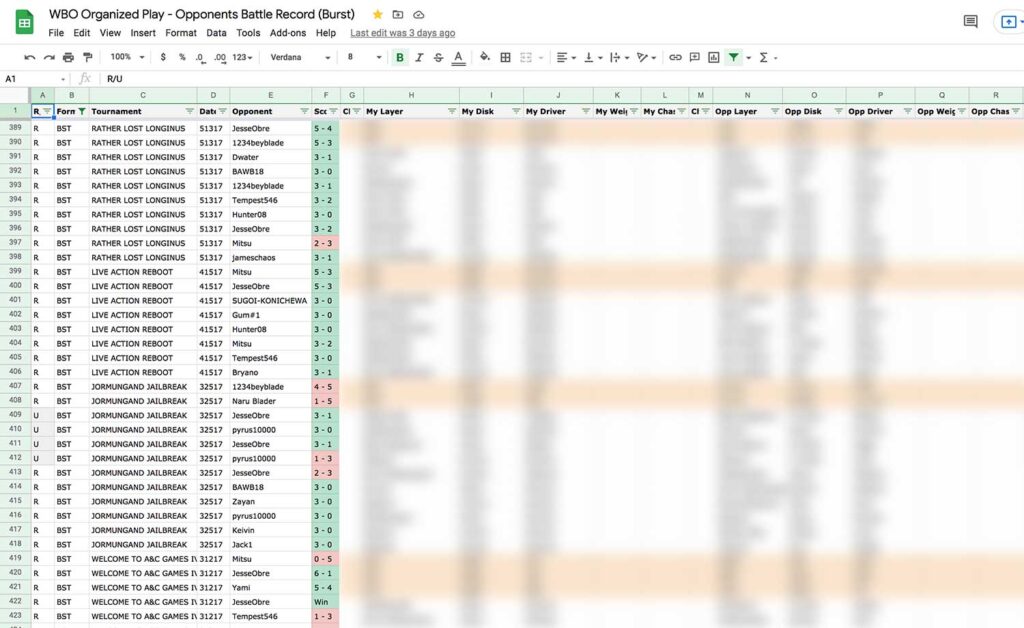
For this tournament, I specifically pulled a report from my spreadsheet for all of the players that were going to be participating in this tournament in case I came up against them.
Many players might simply have this kind of information in their head based purely on memory, but having it written down ensures that you can more precisely reference it at any point into the future.
And if you take the next step and put it into a spreadsheet, your options for quickly finder, filtering, and analyzing that data on a larger scale increase substantially.
The structure of the spreadsheet I created hasn’t been updated in years and is due for some improvements, but it’s still super valuable to me. I’ve been thinking about spending some time to refine this sheet and release it in some fashion as a template. If that sounds valuable to any of you, let me know and I might do that!
Players do not always act in the same ways and they are bound to change over time based on their evolution as a player or the evolution of the metagame itself, but regardless, having a record of your past battles does allow you to identify patterns or preferences that in many cases can predict how a player will act against you generally speaking.
Similar to the WBO winning combinations data, the main point in doing this isn’t to feel like you’ll always know exactly what your opponent will use.
The point is to give you something with some meaning to grasp.
It can’t be all that you rely on as the context of the current situation you’re in is important, but it helps to give you something to direct you rather than relying on dumb luck or a memory that may or may not be accurate. It’s one more thing that you can add to your bank of knowledge going into an event.
… having a record of your past battles does allow you to identify patterns or preferences that in many cases can predict how a player will act against you generally speaking.

Sponsored: Order the newest Beyblades at malloftoys.com!
Heads up: If you buy something through Mall of Toys, you won’t pay any extra, but I’ll get a small commission. This helps me keep things running. Thanks for your support!
2. How to Effectively Conduct Beyblade Testing for Tournaments
Everyone who takes Beyblade even a little bit seriously knows that you need to test in order to understand what works and what doesn’t.
However, I wanted to highlight a few key things about how I chose to approach testing for Bey Fray Qt or that I spent time thinking about during this process.
It may be helpful for whenever you are considering what you should test and how you should conduct testing in order to gain the most from it before your next tournament:
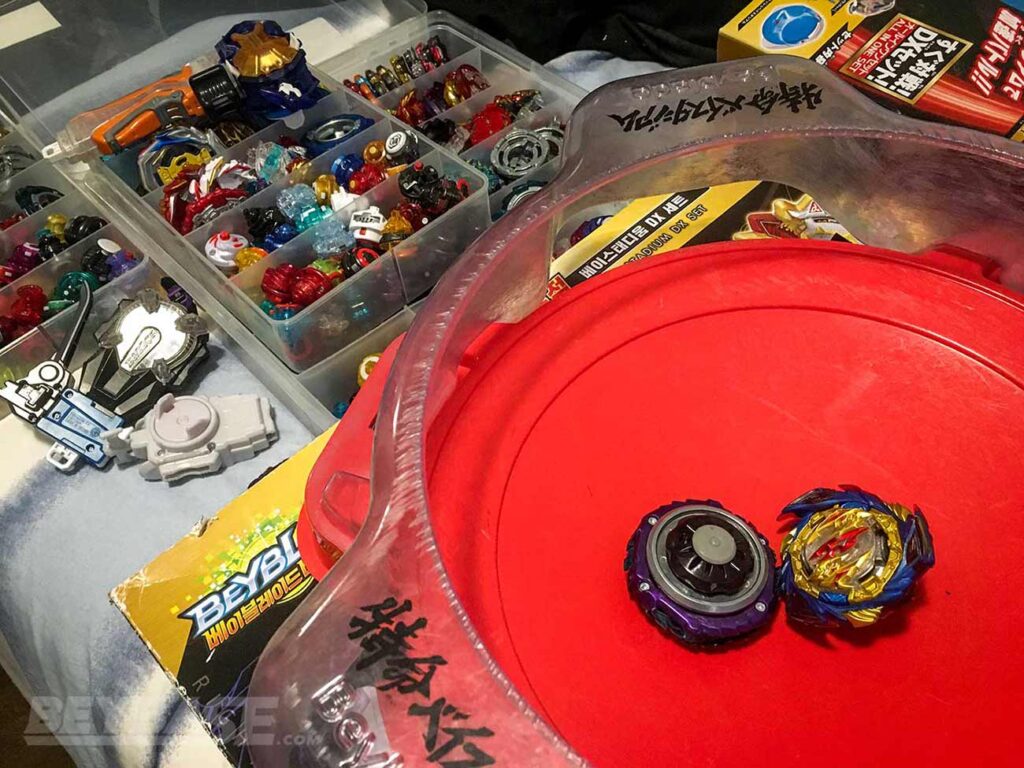
Use testing to define and build confidence with combos
It’s important to test things you don’t like in order to understand them, but it’s even more important to identify what you believe is good and then critically analyze whether your assumption holds up when testing the combination against other commonly accepted competitive Beyblades.
This becomes even more critical when you’ve selected something that doesn’t have previous competitive precedent in your local area. One recent example of this for me was the Rise Driver.
Either way, whether it is something established in the competitive community or not, you want to spend as much time testing or refining any combination you’re considering using in a tournament match as possible.
Doing so gives you the ability to enter any given match with confidence in how it will perform against your opponent’s Beyblade. No matter what they choose.
But it’s also OK to decide against using something because you aren’t confident enough in it yet; there’s value to be found in diverging from the norm, but only when it is a legitimate option that you have dedicated the time to vet. Not when you do it just for the sake of being different.
There were many strong ideas that I tested in preparation for this tournament that didn’t make the cut when it came to defining my final strategy and combos for this tournament.
Conduct testing over multiple days
Especially when there are many new parts available before a tournament, it’s best to think as far ahead and possible and conduct your testing across multiple days.
This enables you to familiarize yourself with as many facets of those parts and any combinations you plan to use as possible.
It allows you to begin to build knowledge that becomes almost second nature to you.
This is important because at the tournament itself you might have a little bit of time to think before each match, but really, what you need is to be able to make as many decisions as possible as quickly as possible with as much confidence as possible in order to be successful.
An example of something that requires this is diving as deep as you can into how different Drivers–at varying levels of wear if possible–in combination with certain Blades, Disks, and modes interact with each other in the opposite spin direction.
The opposite spin/“Life After Death” metagame is so nuanced in Beyblade Burst right now that it basically requires multiple days of testing to become deeply familiar with so you can understand what your chances are in most given matchups. Even for me after doing this I still enjoy testing more to affirm my knowledge in this area.
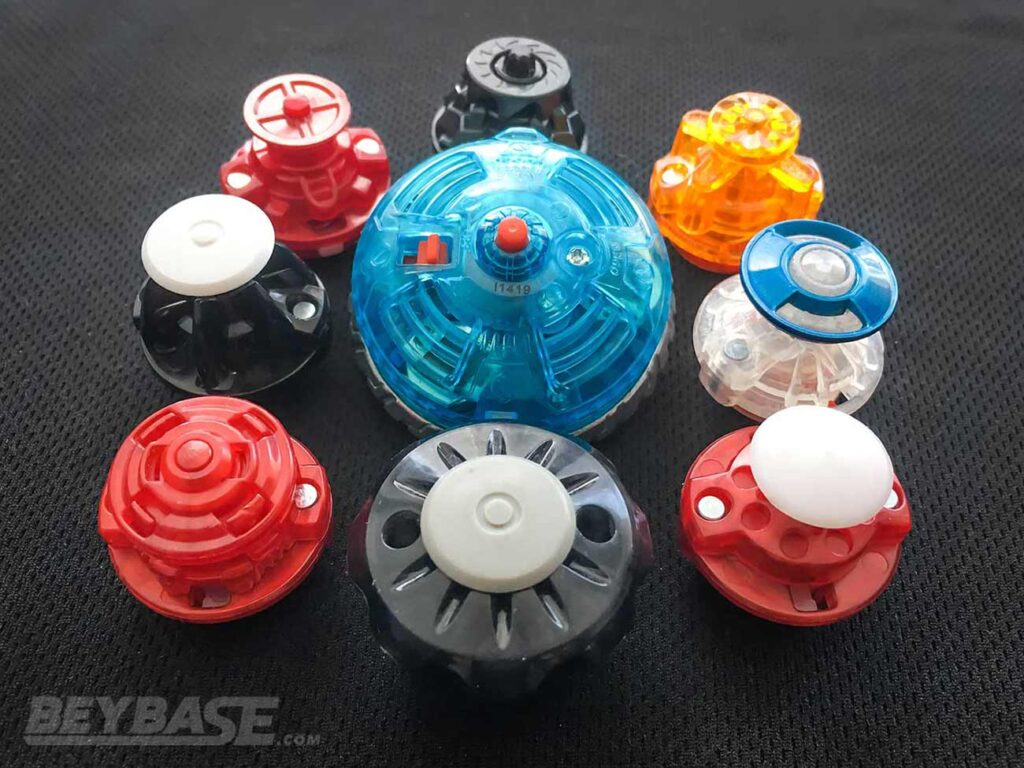
Take notes
And to help connect each of these days of testing, I’ve found that it is useful to take notes throughout each session. These notes can be about:
- What you’ve learned
- What you plan to test next time
- What questions still remain in your mind.
Here’s an excerpt of my testing notes from a session about a week before the event:
Silver and dH X’ tighter than Shadow Amaterios one?
Roar Nx+S Rs can burst Savior Giga X’
Vanish Nx+S Rs can defend against Savior Giga X’ as well, but not as much chance of Savior bursting
Vanish Drift easier to KO than Rs with Savior
Will saviour burst more when awakened?
Test Nx+S free spin
Test Over on Bearing for first stage
Test Rage Drift. Savior, right Bearing vs it
In the lead up to this event, I did five separate testing sessions lasting several hours each and found doing this to be quite helpful.
I was able to reference my notes at any time and use it as a starting point to refresh my memory and understand where I should begin testing next during the ensuing sessions on future days.
Testing is important, but especially when the game becomes as deep as Beyblade Burst has now, it’s even more important to test with intention and structure so that your time is well spent.
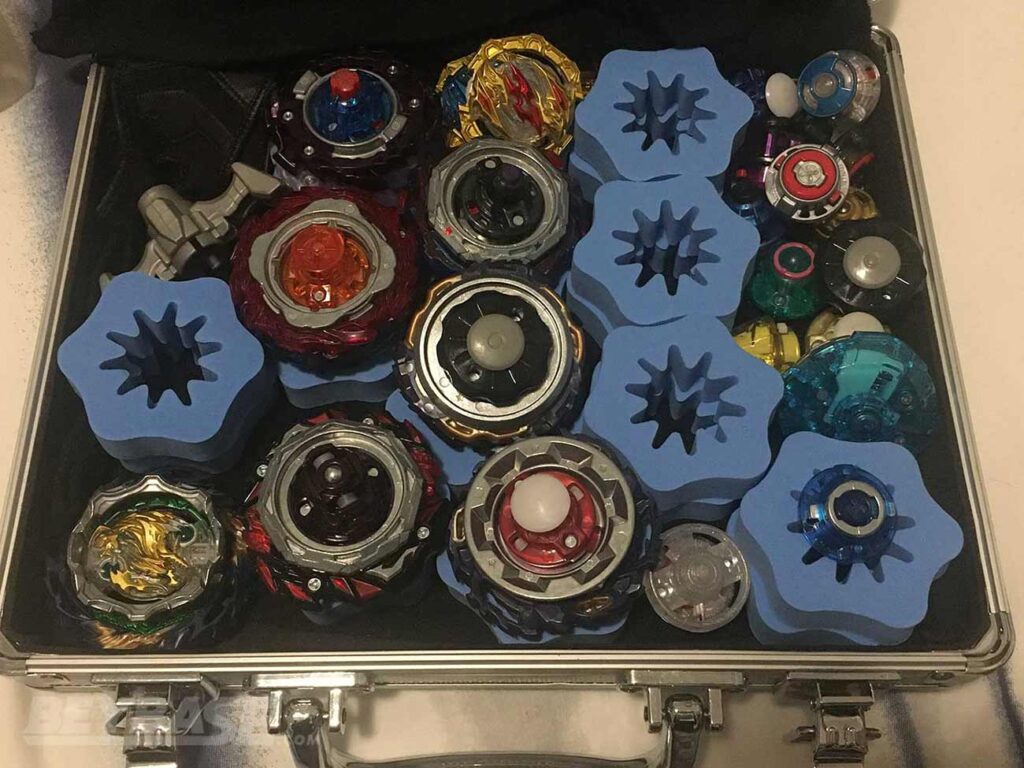
You can’t know everything
However, even with taking notes and spreading your testing across several days in an effort to build a base of knowledge that becomes second nature to you … the fact is that no matter how much you want to, you can’t know (or remember) everything.
Especially in a series as advanced in age as Beyblade Burst is right now with hundreds of parts available for use.
After you’ve accepted this, the best players become not just those who test the most, but those who are able to ask themselves the right questions and determine what should matter the most.
To do this requires an underlying base of knowledge about the game and its rules. This gives you a certain level of intuition about what will be good and what won’t. However, this takes time to develop.
Beyond this, it is the work you’ve put in before testing when evaluating the preferences of the community at large (through things like WBO winning combinations lists) that will give you the ability to select what to test and spend your finite amount of time on gathering first-hand experience with.
At the end of the day though, those who are the most serious about doing well competitively will always feel slightly unfulfilled or uneasy.
There will always be some gap in your knowledge that you didn’t have time to develop or overlooked. But that’s OK; testing is but one part of the learning and preparation process.
The next step is taking what knowledge you have been able to garner through your data analysis and testing to formulate your own personal Beyblade tournament strategy.
… those who are the most serious about doing well competitively will always feel slightly unfulfilled or uneasy.

Sponsored: Order the newest Beyblades at malloftoys.com!
Heads up: If you buy something through Mall of Toys, you won’t pay any extra, but I’ll get a small commission. This helps me keep things running. Thanks for your support!
3. Defining a Beyblade Tournament Strategy
The final piece of the Beyblade tournament preparation puzzle is defining your strategy.
This is where you take the knowledge you’ve built and work to apply it against the most likely scenarios that you can anticipate in your upcoming event.
There’s two key pieces to this if you are playing in a standard worldbeyblade.org event: a first stage strategy and a final stage strategy.
First Stage Strategy
The first stage in WBO events is typically played using what is currently called the “Standard Type” format.
Matches are played using a best 3-of-5 match format between two players who select a single Beyblade to play the match with.
While your strategy can vary especially when you have actionable information about your opponent(s), what I tried to do before this tournament (and every tournament) is highlight a combination that I feel has the best overall chance of victory in a double-blind situation. It basically becomes your anchor, something you can fall back on when things feel entirely unknown.
Then, I commit to sticking with it for the majority of my matches even if I lose once with it. You’ll learn what combination it was for Bey Fray Qt in the second part of this report.
It’s important however to have other options as well for when you run into situations where you might be able to afford the risk given:
- You’ve amassed a strong record in early rounds,
- You’re going up against someone who is likely to counter you
- You know that given the tournament structure what the minimum record required to advance to the finals will be.
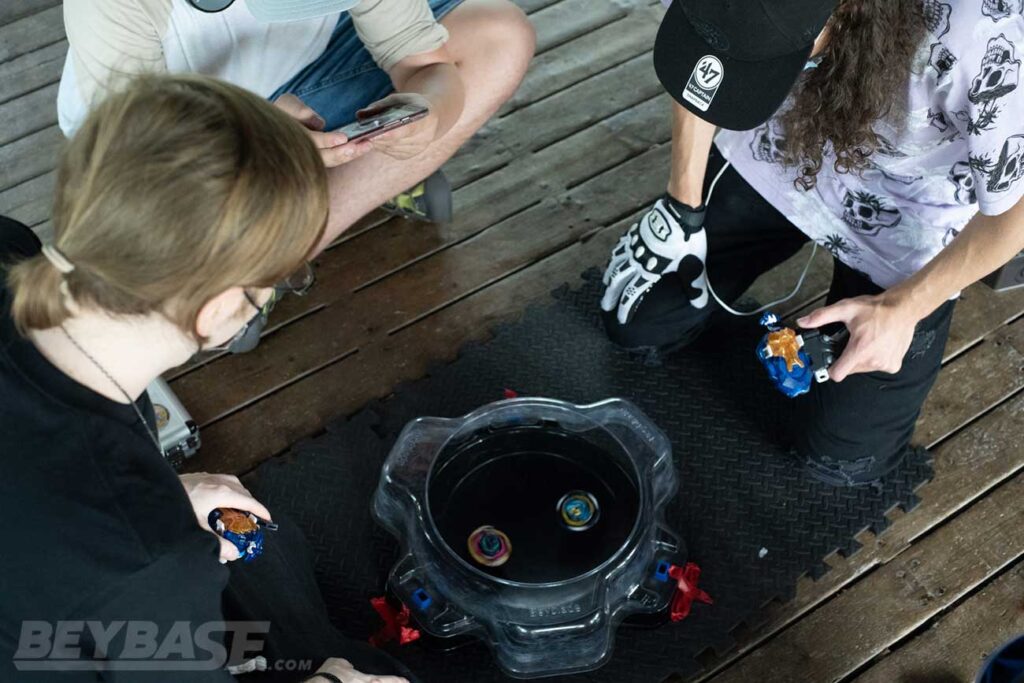
The degree to which you need to think through your first stage strategy may depend on:
- The overall quality of opponents that will be playing in your tournament. Is it a big tournament with many inexperienced players? Is it a small tournament with many experienced players?
- The tournament structure (Swiss, Block Round Robin, Double Elimination).
- Your seeding, which influences who you play and your path to the finals.
What I’m essentially saying is that you will not always be able to mindlessly pilot one combination to the finals with a “good enough” record … but the reality is that in most eras of this game, there is often going to be a select few combinations that exhibit the highest overall chance of winning when compared to everything else. Those are the combinations you want to zone in on given the nature of the “Standard Type” single Beyblade match format.
I’ve begun to view the first stage purely as the gateway to the finals.
That’s not a revolutionary thought, but for me it has been in some ways because of the pressure I’ve placed on myself historically to care about maintaining as close to a ‘perfect’ record as possible for the sake of my overall points in the WBO Rankings.
I care less about my record in the first stage lately than I do about using it as a vessel to make it to the finals and achieve my real goal: winning the tournament.
Final Stage Strategy
The final stage of WBO tournaments uses WBO Deck Format, which offers much more player freedom and agency in pretty much every way.
This stage is always conducted as a single elimination bracket. As such, this is where winning and losing actually matters the most.
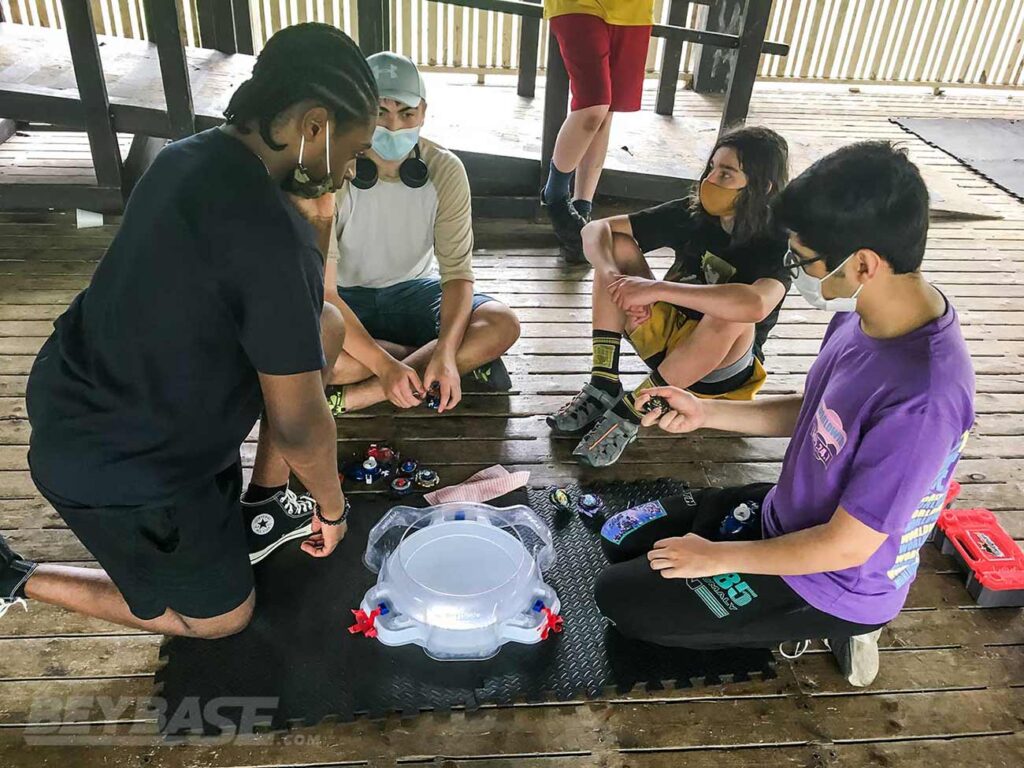
Practicing Beyblade Deck Composition
When I think about this format, there are an infinite number of ways it can be approached thanks to the possibilities afforded by different deck compositions. And the only way to begin narrowing down these possibilities is to spend time building ‘mock’ deck compositions.
The way I do this is to take whatever set of combinations I’ve decided on based on my data collection and testing and build out as many variations of different decks as possible.
Each time I build one, I take a picture and then build another.
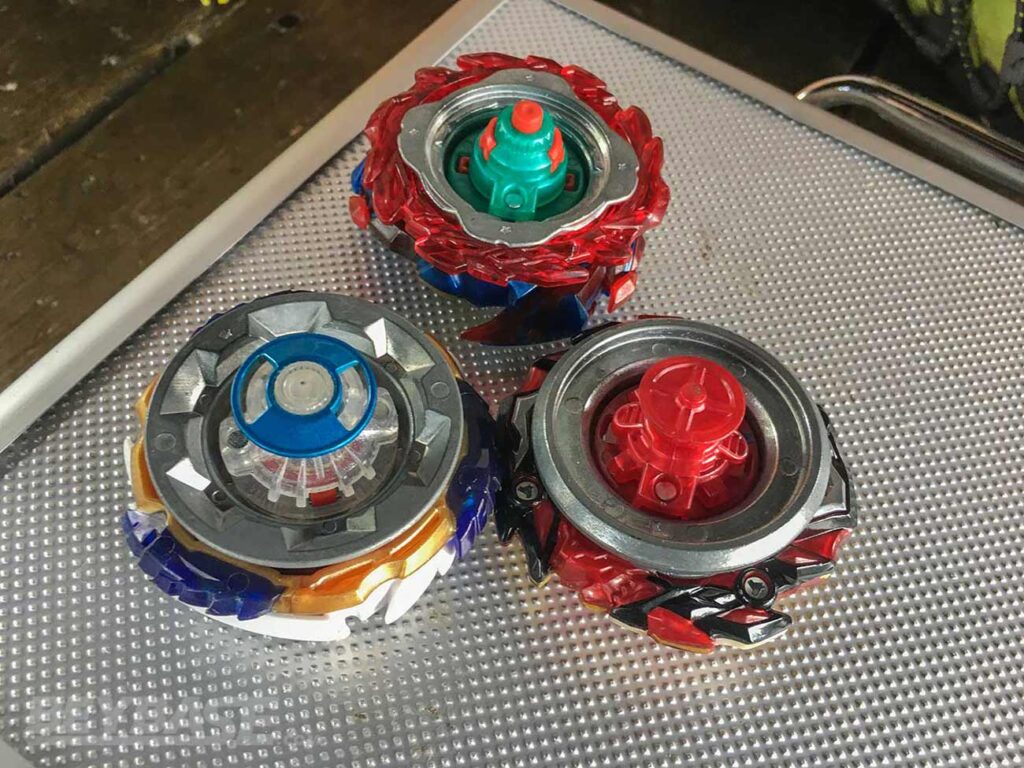
Eventually, I amass a collection of deck compositions that I can quickly compare. For this tournament, I ended up with 36 options in total that were created throughout my five testing days.
Some of these deck compositions evolved throughout this period and by the end there was probably less than a third of them that I was seriously considering.
Beyblade Deck Scoring
The last piece is one that I haven’t perfected yet.
I want to devise a standardized method for being able to “score” particular deck compositions based on their overall coverage against common Beyblade combo types. But in trying to do this I found it difficult to truly account for all of the nuance that can exist between particular types and parts.
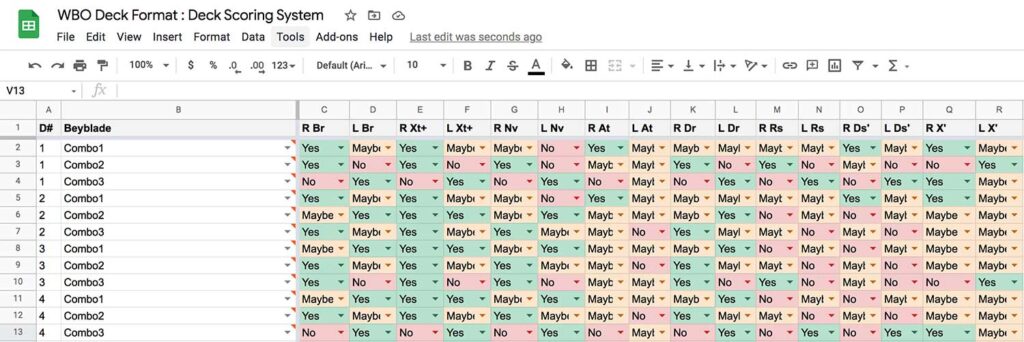
I got as far as defining some basic categories such as “Right Bearing”, “Left Bearing”, “Right Xtreme'”, etc and assigning a “score” of “Yes”, “No”, or “Maybe” to them in terms of a particular combinations very general chance of winning or losing against that type of combo.
The next step from there was to apply a final score to the entire deck which compiled their individual scores and could represent how strong its matchup spread was against common opponent types.
This first attempt was rudimentary, but I may work on this again in the future. Stay tuned!
What do you think? Comment below!
I’d love hear how you guys think about and spend time preparing for tournaments. Do you have any strategies that differ from what I’ve outlined here?
Comment below and let me know!
If you enjoyed reading this article, please also feel free to share it with any of your friends who are into playing Beyblade competitively or enjoy hosting tournaments.
Bey Fray Qt Tournament Article Series
10 thoughts on “3 Step Guide To Preparing For a Competitive Beyblade Tournament (Bey Fray Qt Report – Part 1)”
Comments are closed.

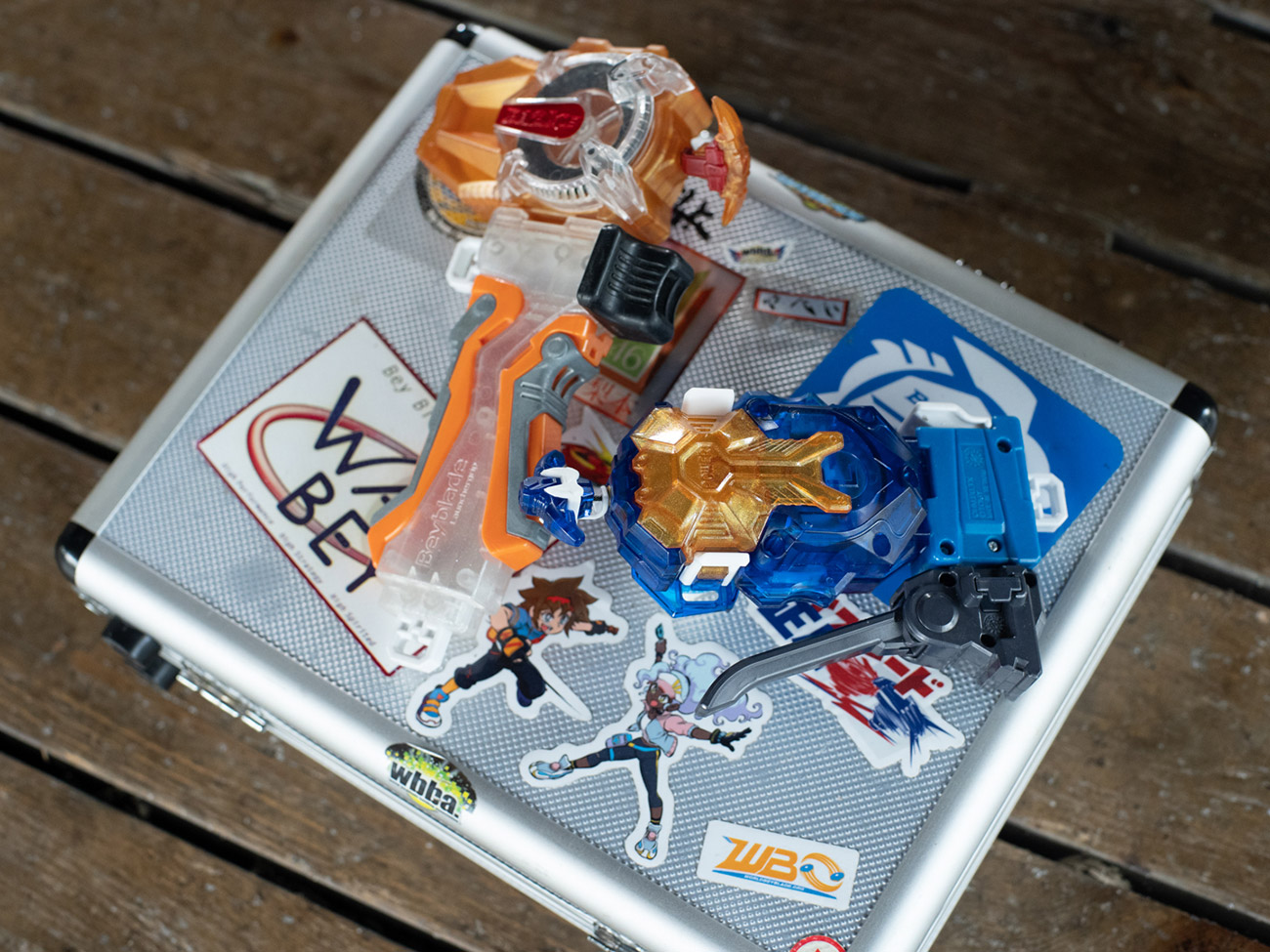
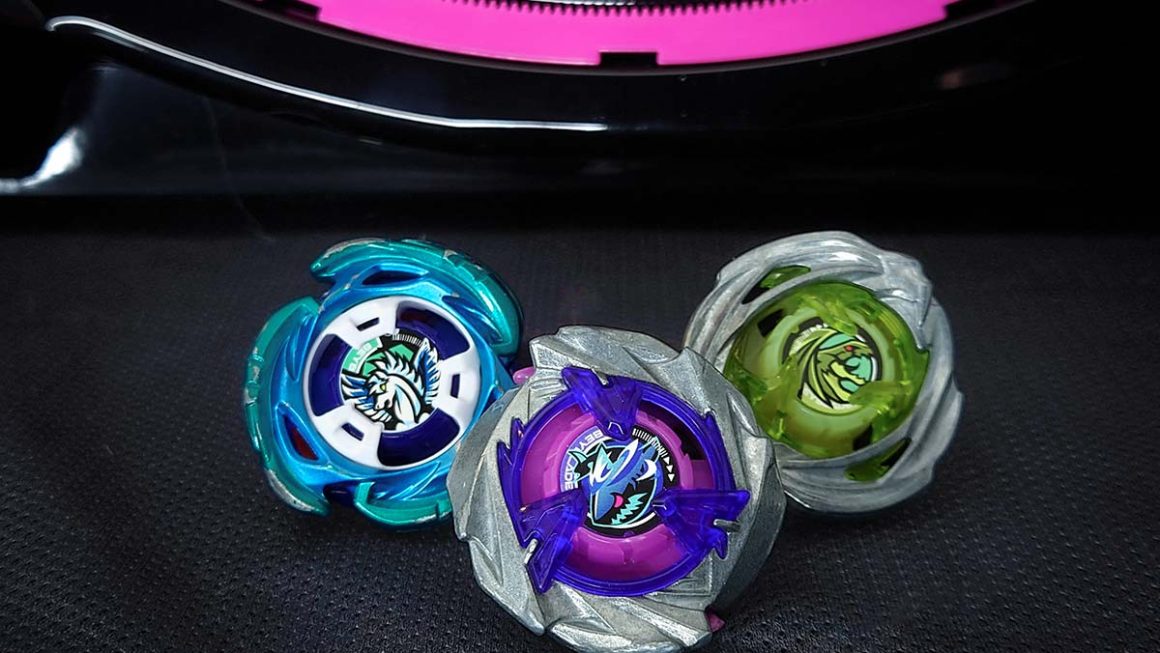
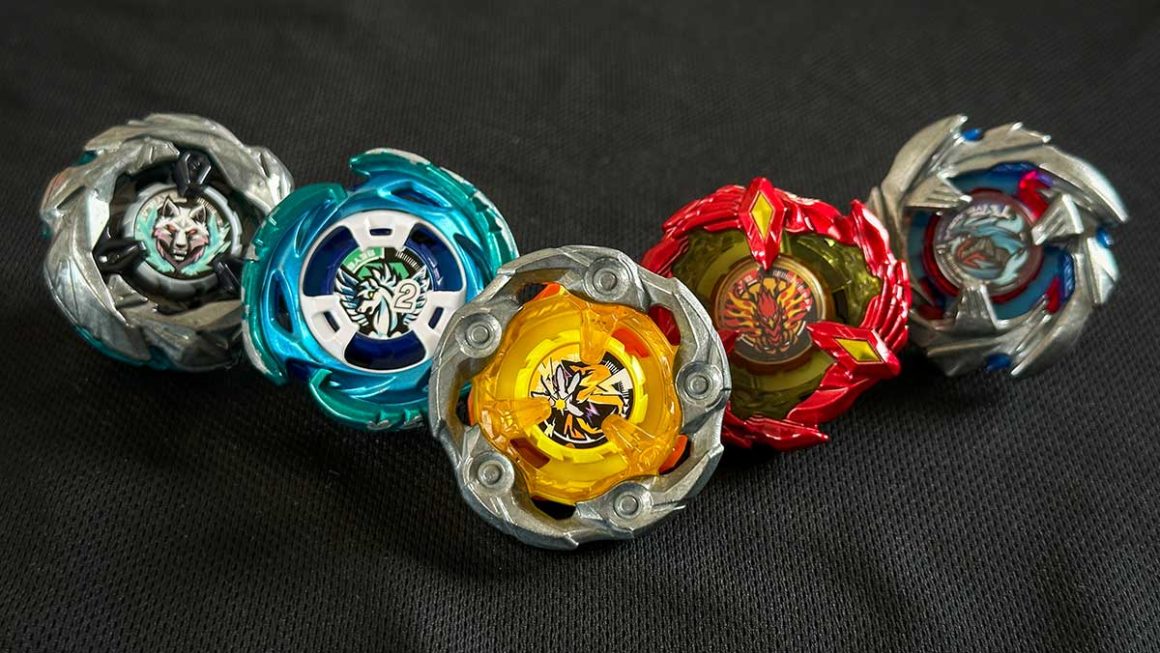
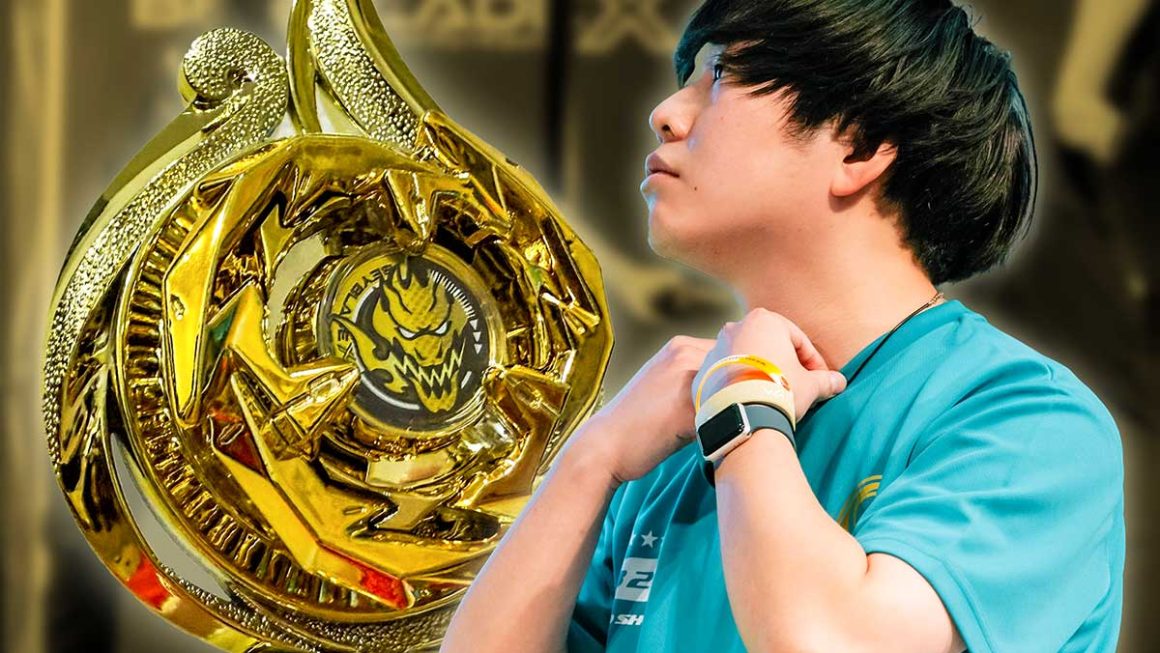
This is Great!
Thank you, InfernoBlader!
Great article as always Kei! I have a few questions to ask.
How powerful Minoboros layer is in Burst classic format?
Is Xtend+ outclassed? As much as I love this driver, the frequent usage is going downhill.
Savior on Nexus+S gear is quite an interesting combination. What are your thoughts?
Thanks, Noctua!
1. The Minoboros Layer is a bit specialized. It’s not as powerful as Victory Valkyrie overall, but it does well against Dark Deathscyther in particular as an example and also has more stamina than most other attack type Layers that I can think of, so it’s useful in situations where you might be playing an attack type.
2. I’ve been asking myself this same question recently. I’d be inclined to say that it’s outclassed, but still competitive in certain situations.
3. I think the Giga Disk is better for it. The Savior Blade is aggressive enough. Nexus-S might provide some additional attack power, but the potential for scraping due to how wide it is isn’t attractive to me.
Hey Kei Bro! Love the article and will be trying your strategies for upcoming tournaments in Delhi, India!
And you request you to make an article for the competitive combos, parts, and in-depth review of savior valkyrie, DB power launcher, and v-gear!
Here are some questions to ask you!
1. is Savior with nexus, Belial core, and ev’ is good? as mine is coming in 1 week
2. I want to know more about this combo from you- Dynamite Belial(f-gear) 3 wheel rise
3. and this too! – Dynamite Valkyrie/Belial f-gear nexus venture+ v-gear
Your articles tell so much ! thx!
Thanks, Allam! Good luck in your upcoming tournaments.
I was planning to do a Savior Valkyrie review, but the time it took for my past few articles sort of pushed me outside of the time frame in which I would have wanted that to be published. So, I’ll likely be doing one for Guilty Longinus instead.
To answer your questions:
1. That combo might be OK primarily as an anti-attacker if you awaken Evolution’. I haven’t tested Ev’ with Savior though, so I’m not sure how good the burst resistance is with it. My favourite combo with Savior right now is Savior Ragnaruk Giga Xtreme’-2. Xtreme’ has to be the silver version.
2. I talk about my usage of a similar combo if you scroll down a bit in this article here: https://beybase.com/how-to-prepare-for-a-competitive-beyblade-burst-tournament/#2-testing-the-new-beyblade-burst-dynamite-battle-parts
3. I don’t like Venture+V that much. It doesn’t seem to me to specialize in much of anything; the attack power isn’t great, same-spin stamina isn’t great, and opposite spin stamina isn’t great either.
Hey , I have a question , Is the diablo core and frame good for competetive
Hey there, are you talking about Diabolos from Beyblade Burst Sparking?
Love the article and am looking forward to the next one.
I have a question; are astral spriggan or quattro competitively viable in tournaments with all the other great parts?
Thanks, Delta! The Astral Blade is definitely competitive. I talk about it in part two of this report here: https://beybase.com/top-3-new-beyblade-burst-db-parts-tournament-report/#the-top-3-new-beyblade-burst-db-parts-for-tournaments
I need to test the Spriggan Dynamite Core more, but it seems usable on some Blades for sure.
As for Quattro, I believe it can be usable, but I’ve been struggling to justify its usage given how specialized it is in terms of only being good in same-spin situations.